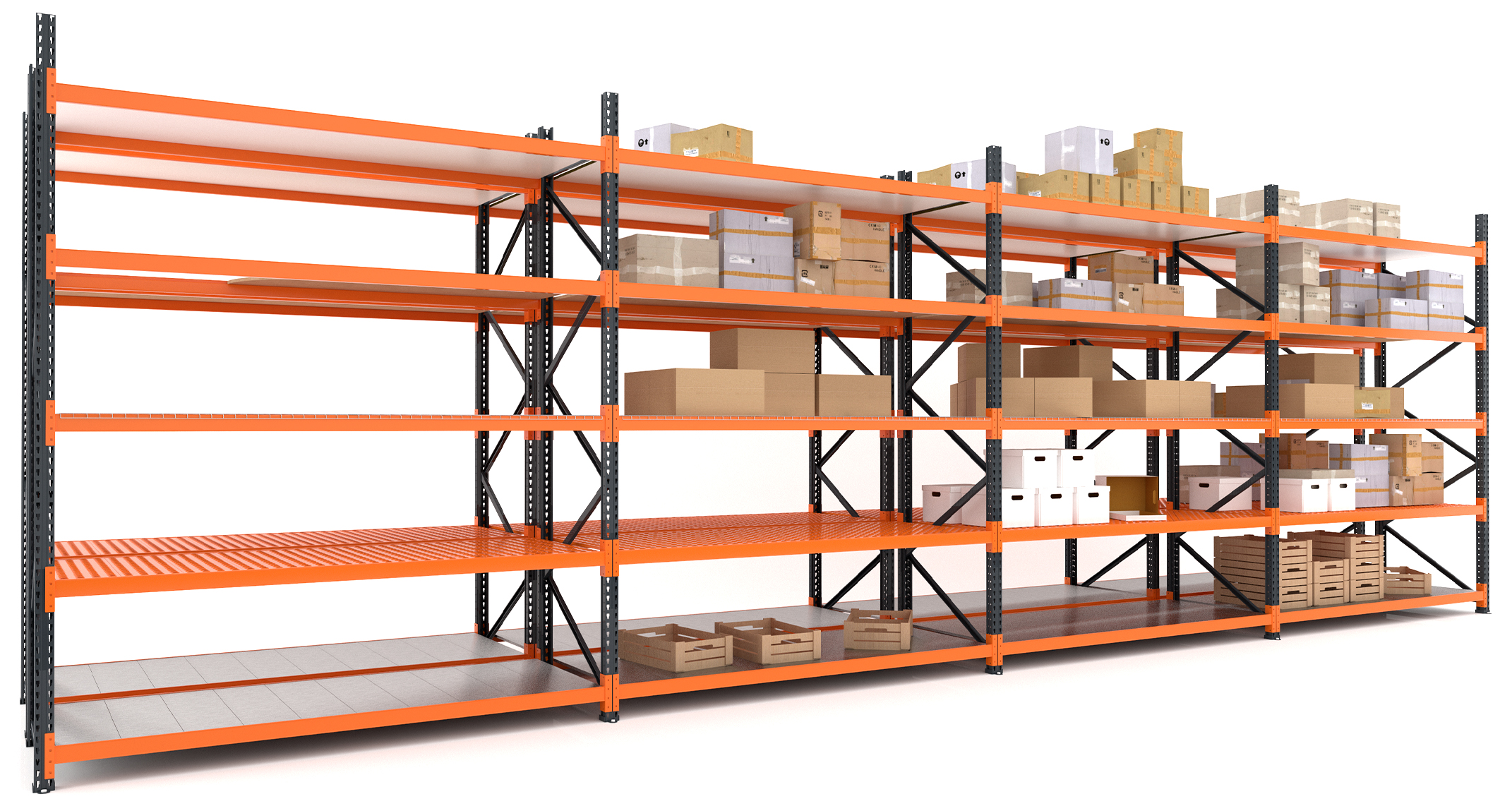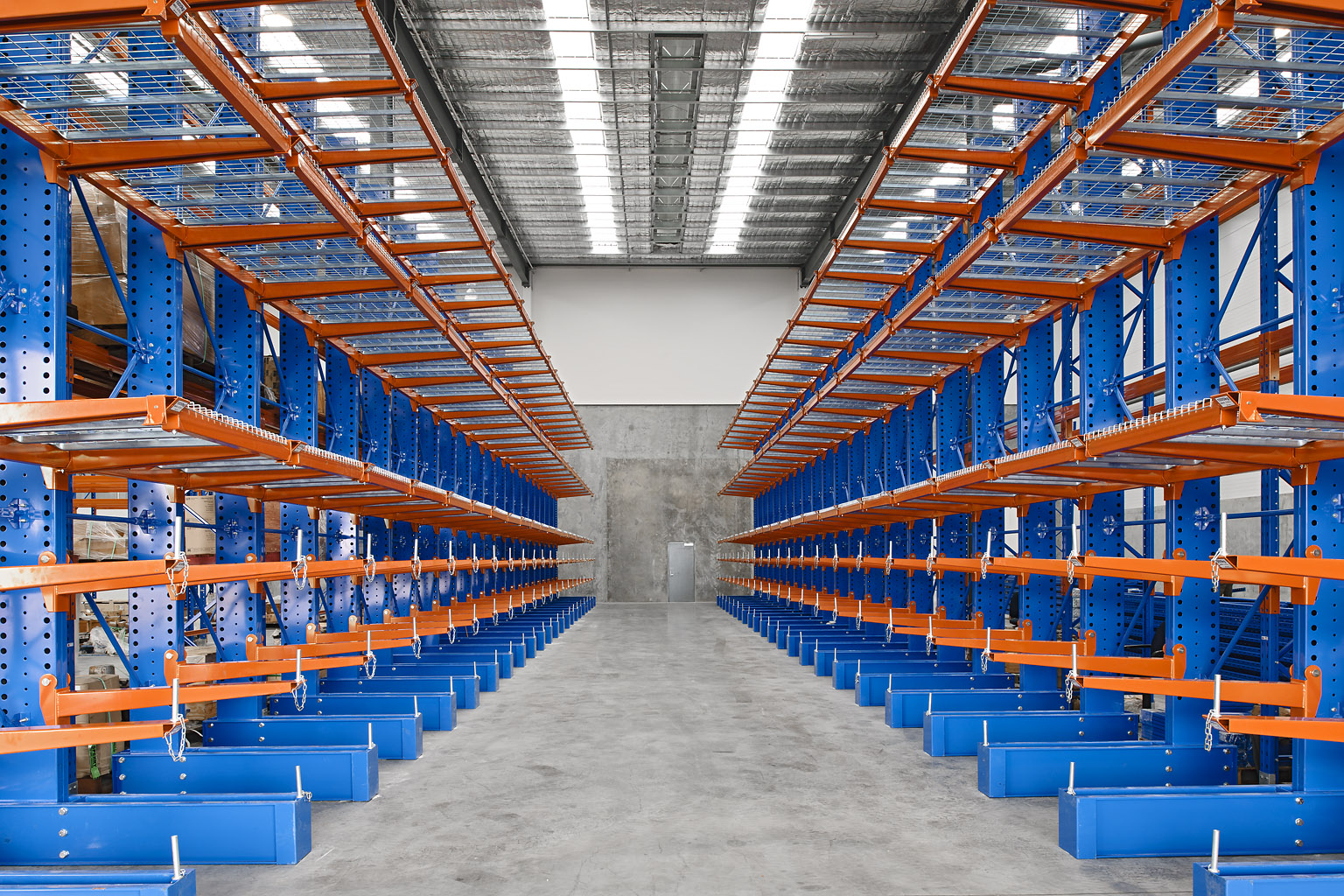Industrial racks and shelving form the backbone of efficient storage systems, offering businesses a versatile and robust solution for organizing and maximizing their inventory. Whether it’s heavy-duty pallet racks for warehouses or sleek shelving units for retail stores, these structures play a crucial role in streamlining operations and enhancing productivity.
From cantilever racks designed for bulky items to drive-in racks that optimize space utilization, industrial racking systems come in a variety of configurations to meet diverse storage needs. Understanding the materials, construction methods, and safety considerations associated with these systems is essential for businesses seeking to implement effective storage solutions.
Industrial Racks and Shelving System Designs
Industrial racking systems are designed to optimize storage space and efficiency in warehouses, distribution centers, and other industrial settings. They come in various types, each tailored to specific storage needs and requirements.
Types of Industrial Racking Systems
- Cantilever Racks:Designed for storing long, bulky items like pipes, tubes, and lumber. They feature arms that extend horizontally from a central column, providing easy access to stored items.
- Pallet Racks:Used for storing palletized goods. They consist of upright frames and horizontal beams that support the pallets. Pallet racks offer high load capacities and can be customized to accommodate different pallet sizes.
- Drive-In Racks:Designed for high-density storage of palletized goods. They allow forklifts to drive into the racks, maximizing space utilization. However, they have limited accessibility to individual pallets.
Materials and Construction of Industrial Racks and Shelving
Industrial racks and shelving systems are crucial components of any warehouse or storage facility. They provide efficient storage solutions for various items, optimizing space utilization and ensuring easy access to goods. The materials used in their construction and the methods employed for their assembly play a significant role in their durability, load-bearing capacity, and overall performance.
Materials Used in Industrial Racks and Shelving
Industrial racks and shelving are typically constructed using various materials, each with its own advantages and disadvantages:
- Steel:Steel is the most commonly used material for industrial racks and shelving due to its exceptional strength and durability. It can withstand heavy loads and is resistant to bending or warping. However, steel is susceptible to corrosion, especially in humid environments, and can be relatively expensive compared to other materials.
- Aluminum:Aluminum is a lightweight and corrosion-resistant material that is often used for specialized applications where weight reduction is a priority. It is stronger than plastic but less durable than steel. Aluminum racks and shelving are generally more expensive than steel options.
- Plastic:Plastic is a cost-effective and lightweight material that is often used for light-duty storage applications. It is corrosion-resistant and easy to clean, making it suitable for use in food and pharmaceutical industries. However, plastic racks and shelving have lower load-bearing capacities compared to steel or aluminum.
Construction Methods for Industrial Racks and Shelving
Industrial racks and shelving are assembled using various construction methods, each with its own advantages and disadvantages:
- Welding:Welding is a permanent joining method that creates a strong and durable connection between components. Welded racks and shelving are highly resistant to bending or twisting and can withstand heavy loads. However, welding requires specialized equipment and skilled labor, making it a more expensive construction method.
- Bolting:Bolting is a mechanical joining method that involves using bolts and nuts to connect components. Bolted racks and shelving are relatively easy to assemble and disassemble, making them suitable for applications where flexibility is required. However, bolted connections may be less durable than welded connections and can loosen over time.
Installation and Maintenance of Industrial Racks and Shelving

Proper installation and maintenance of industrial racks and shelving are crucial for ensuring the safety and efficiency of storage operations. This section will provide guidance on installing and maintaining industrial racks and shelving systems effectively.
Installation of Industrial Racks and Shelving
Installing industrial racks and shelving requires careful planning and execution. Here are some key steps to follow:
- Plan the layout:Determine the optimal layout for the racks and shelving based on the storage requirements, space availability, and accessibility.
- Prepare the site:Ensure the floor is level and can support the weight of the racks and shelving.
- Assemble the components:Follow the manufacturer’s instructions to assemble the racks and shelving components securely.
- Install the anchors:Secure the racks and shelving to the floor using appropriate anchors, such as bolts or concrete screws.
- Level and align:Use a level to ensure the racks and shelving are properly leveled and aligned for stability.
Importance of Regular Maintenance
Regular maintenance is essential to ensure the safety and longevity of industrial racks and shelving. Neglecting maintenance can lead to accidents, damage to stored goods, and reduced productivity.
Types of Maintenance Tasks
Various maintenance tasks should be performed on industrial racks and shelving, including:
- Inspections:Regular visual inspections should be conducted to identify any damage, corrosion, or other issues.
- Repairs:Any identified damage or issues should be repaired promptly to prevent further deterioration.
- Cleaning:Clean the racks and shelving regularly to remove dirt, dust, and debris that can affect their structural integrity.
- Load capacity assessment:Periodically assess the load capacity of the racks and shelving to ensure they are not overloaded.
Safety Considerations for Industrial Racks and Shelving
Ensuring safety is paramount when working with industrial racks and shelving systems to prevent accidents and injuries. These structures, designed to store heavy loads, pose potential hazards if not handled and maintained properly.
Falling Objects
Falling objects from improperly stored items or overloaded shelves can cause severe injuries. Ensure proper load distribution and secure items with straps or nets to prevent accidental falls.
Collisions
Collisions with racks or shelving can occur during loading, unloading, or movement. Designate clear aisles, mark potential hazards, and train operators to avoid collisions.
Structural Failure
Overloading, improper installation, or damage can lead to structural failure of racks or shelving. Regularly inspect systems for any signs of damage and address any issues promptly.
End of Discussion

In conclusion, industrial racks and shelving are indispensable tools for businesses looking to optimize their storage capabilities. By carefully considering the factors discussed in this article, businesses can select and implement the right racking system for their specific requirements, ensuring efficient inventory management, enhanced productivity, and a safe working environment.
